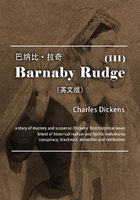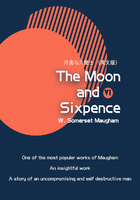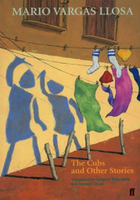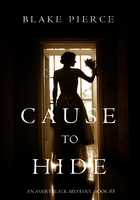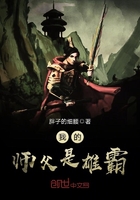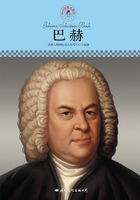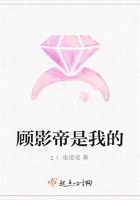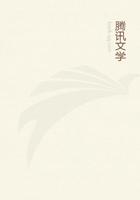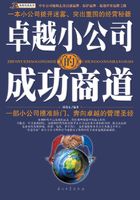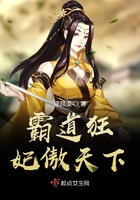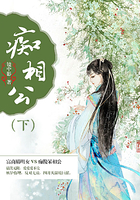Bananas are cheap and all around us, but they don't grow on trees. With no woody trunk or bough, the banana is a plant, a herb and the world's tallest grass. Rodgers and Hammerstein further confused the issue in South Pacific with their evocation of a primitive island paradise and 'bananas you can pick right off a tree'. The fruit does not ripen well when still on the plant and tends to grow sour. It is best picked and shipped when green. Normally bananas come from a plantation in a very distant country to point of sale within twelve to thirteen days, three hundred hours, of cutting. Any later and they start to rot. The vast majority of bananas arrive in good time and see out their last days before market in industrial ripening rooms.
Hot and damp are the banana's preferred conditions for growth, such as those found in the coastal lowlands of the tropics. Central America's Atlantic coast is therefore perfect. Bananas rarely grow outside the tropics. Israel is one exception and Iceland another, in proximity to its steaming geysers. Florida was once tried as a banana location but its occasional frosts proved the experiment's unravelling. Bananas thrive in rich sandy loam and, since they grow in areas where it rains a lot, need good drainage. Banana plants enjoy the ambiance of swamp but not actually being in it; they cannot survive standing in water.
Banana plants grow to a height of between two and a half and nine metres. The taller they are, the more vulnerable they are to hurricanes. To grow them, cuttings are taken from the underground stems of mature plants and planted. A month later a tight roll of leaves appears. As they grow, these rolls unfurl, quite fast, every six to twelve days and look like large drooping feathers. The pulpy, fibrous 'trunk' of the banana plant is really the stalks of these leaves. Full-grown leaves, or fronds, are up to three metres long and sixty centimetres wide and have a certain sweeping elegance, until they split across and start to look untidy.
After ten months a large bud appears from the unrolling leaves, at the end of a stem. The bud itself is made up of small purple leaves that pull back to reveal clusters of small flowers. These clusters grow into tiny banana bunches. Bunches are 'hands', the bananas called 'fingers'. They grow at eight to twenty fingers per hand and five to ten hands per stem. As the stems become heavier, they bend down and droop towards the ground, and as the bananas grow larger they curve upwards.
Four to five months later the fruit is harvested by cutting the stem down. The violated stem gives off a sticky juice. Experienced stem carriers, often known in the trade as 'backers', will wear an appropriate hat to avoid having this juice leak into their hair. I shampooed mine thoroughly every day and bleached it dry in the afternoon sun. It looked great for a while. After a few weeks, my hair fell out.
Bananas grow in distant realms, mysterious places, out of sight and mind. They flourish in areas hostile to man, malarial regions, full of mosquitoes. It is said that if you wipe a mosquito bite with the inside of a banana skin it will ease the itch. I've tried it and it worked for me. We attribute to bananas all sorts of qualities, real and imagined.
Bananas have been said to solve virtually every health problem: obesity, blood pressure, depression, constipation. They have natural sugars for lasting energy, potassium to regulate blood sugar levels, fibre for the bowels. They lift the mood or alternatively calm you down, containing the neurotransmitters dopamine and seratonin that, respectively, replicate Ecstasy and Prozac.
Bananas stand for 'peace and love'. Donovan sang about this in the 1960s in 'Mellow Yellow'. According to his song's lyrics, the banana was capable of 'electrical' effect. To achieve it, the counter-culture smoked the scraped and dried innards of banana skins, or so it was said.
The banana makes us laugh. In a light-hearted way it is associated with insanity: 'going bananas', says the Oxford English Dictionary, entered linguistic currency in 1935. Comedy had a great deal of fun with the fruit: Charlie Chaplin and many others slipped on it. From the 1920s to the 1950s music halls ran riot with it: 'Have a banana!' It was perhaps suggestive but difficult to take seriously. Banana humour is of the type featured on 'dirty' postcards of the 1950s sent from outreaches of England's disappeared holiday land like Clacton and Bognor Regis.
In the US Carmen Miranda danced and sang with bananas to great acclaim in her films of the 1930s and 1940s. In one, The Gang's All Here, her female chorus laid around her waving huge make-believe bananas between their legs. The scene ended with an explosion of tropical fruit from her tutti-frutti hat.
Bananas speak to our insecurities, male in particular. Are we up to it? United Fruit used to make play of this in its advertising. No banana of less than nine inches, it boasted, was fit for requirements. Of course, the company presented this as pure statement of fact; salacious interpretation would not have been of its doing. With phallic symbolism in mind, manuals on etiquette at the turn of the nineteenth and twentieth centuries taught well-bred American ladies the correct way to eat bananas. On drawing back the skin, this was not by way of direct conveyance to the mouth. Nor was the fruit to be touched by the fingers. A silver knife and fork were used to cut and duly dispatch the banana in bite-sized pieces. Any gentleman in attendance at such a ritual might have had cause to shift uncomfortably in his chair.
The banana manages to mask much of its subliminal side with assumed qualities of innocence. Advertisements in the 1950s and 1960s on British commercial television, still a novel phenomenon at the time, invited you to 'Unzip a Banana'. Was any connection drawn between zipping and zippers? We wouldn't consciously have thought about it. Anyway, fly buttons were still the norm.
In the late 1950s Harry Belafonte had a huge hit with the 'Banana Boat Song', a calypso about stevedores in the Caribbean approaching the end of their night shift: 'Dayy-O!' It all sounded like they were having a great deal of fun. Listening to it in Britain, I had no grasp of why anyone would want to leave such a place. Yet it was already over a decade since in 1948 the Windrush, a banana boat, had brought the first shipment of Caribbean migrants seeking work and a new life in England. In 1958 there had been 'race riots' in the Notting Hill district of London with the immigrant community alleged to be 'stealing our jobs' and – perhaps more significantly – 'stealing our women'.
As for the banana's innocence being confounded by coups d'état and other such political machinations in the regions where it is grown, we simply wouldn't have known of such a thing. (Incidentally, no one laughs at the banana in its areas of origin. It is far too serious a business, on which jobs and lives depend. When I worked in Central America, I never heard one banana joke.)
The banana spans our history of imperfection from the fanciful origins of man to the modern consumer society. Scholarly observations on the matter have suggested that it was probably a banana leaf, rather than a fig leaf, that Adam and Eve wore in the Garden of Eden to hide their shame. The fig leaf might have looked most appropriate, but would have been too difficult to attach to the body. The banana leaf, with its superior ability to drape and wrap around things, was far more suited to the part.
When it comes to our contemporary shopping preferences, there are few more popular items than the banana. It has long since outstripped the apple as our favourite fruit. Recent claims have gone further, rating the banana among the most popular products on supermarket shelves. One study, which presumably set aside such dull basics of life as milk and bread, suggested that the only products beating the banana on to our supermarket shopping lists were petrol and lottery tickets. Whether these qualify as true supermarket items may be a moot point, but, either way, what is an exotic and apparently marginal piece of fruit stakes an extraordinary claim on consumer affections.
Clement Attlee, Britain's prime minister in the early years after the Second World War, had a United Fruit shipload of bananas brought over in 1945 to herald the idea of a bright new future. This was to be 'Social Democracy' and the 'welfare state' and the boat had a banana on board for each child and pregnant mother of the land. His gesture, however, was taken in other ways. Evelyn Waugh, the novelist, saw it in more melancholic terms, of a lost and glorious past. When the bananas arrived for his three children, he had his wife serve the fruit with rare cream and sugar and scoffed the lot in front of them. (His son Auberon later wrote that he had not taken anything his father had to say on faith and morals very seriously thereafter.)
The British public at large was less disposed to view the bananas as a gift from a benevolent state than as a promise of greater luxuries to come. They would remain disappointed for some while. Attlee delivered his greatest triumph three years later, the National Health Service, and I was born in the first week of it in an English stately home converted into a hospital. 1948 was the year when Britain's post-war austerity reached a height, along with the public's frustration with it. By then the subversive banana had long since slipped in beneath the wire and people were hankering for more of the TVs, fridges, cars and other goods they heard everyone had in America.
In some areas the banana's weird allure lasted for the duration of the Cold War and beyond. In Eastern Europe bananas became the symbol of 'The West'. Longer queues formed for them in the Soviet Union than for other foods. In East Germany people laid out virtual altars of bananas, keeping them for as long as possible to be looked at or offered to honoured guests. Rare visitors from the West found themselves mystified by the solemn ceremony that accompanied such a seemingly commonplace gift.
When the Berlin Wall came down in 1989 freelance opportunists were first into the breach, relieving East Berliners of their five free Western Deutschmarks in exchange for bananas. The East Berliners didn't care. They bought them, ate them and marched on to the other side. Many sang and chanted as they went: 'Hold my hand, and take me to Banana Land'.
Contrary to its appearance as a primitive thing of nature, the banana we know is nothing of the kind. United Fruit created it. The company took bananas out of their jungle environment – they don't grow particularly well there – and put them into huge plantations, for mass production and mass consumption.
The banana is of the botanical genus Musa and has some three hundred varieties. One wild type, Musa acuminata is a giant jungle herb containing a mass of hard seeds that make it all but inedible. Musa paradisiaca is among the long macho varieties associated with Afro-Caribbean cuisine. Dessert bananas include the stubby Red Macabu and the small yellow Lady Finger. Another type dares to be named 'Apple'. One tastes more like a pear. Bananas come short and long, while some are straight, as if to comply with a mythical regulation of the European Union. Another, the quadrilateral, is square.
United Fruit whittled the varieties for its purposes down to one. This was the Gros Michel or 'Big Mike'. It was economically 'efficient', good for profits. More sizeable than alternative varieties like the Red Macabu or Lady Finger, Big Mike meant consumers simply ate more banana. It also travelled well. With a thicker skin than some, Big Mike arrived at its destination with less bruising.
United Fruit was a pioneer of mass production. With its one-size-fits-all banana, the company beat Henry Ford, the man often credited as the pioneer of industrial standardisation, by a number of years. Big Mike was on the shelves at the turn of the twentieth century; the Model T motor car, on the other hand, rolled off the production line in 1908.
Big Mike also suited the most general of tastes. It was not too big or too small, too yellow, or too sweet. In fact, it was a little bland. After a while no one really knew any different, incapable as they were of remembering any other kind. United Fruit's bananas were the forerunners of those products we know today: the cup of cross-cultural coffee foam; the multinational hamburger. For Big Mike read Big Mac.
Bananas weren't seen in great number in Europe till some way into the first decade of the twentieth century. My grandmother recalled people biting straight into them; they had to be shown how to peel them. Today the British and Americans eat twelve to thirteen kilos, about seventy bananas per person per year. Developing countries mainly consume savoury cooking bananas, a staple of diet. The banana is the world's fourth major food after rice, wheat and milk.
It is thought to have originated in the rainforests of Malaysia in the Stone Age, discovered by cavemen some ten thousand years ago. The name 'banana' comes from Africa. At some time, somehow it jumped continents. Experts rummaging in fossilised rubbish pits in Cameroon have found banana tissue dating back 2,500 years. From West Africa the banana found its way to the Canaries, and thence onward with the Spanish conquest to the Americas.
The entrepreneurial friar Tomás de Berlanga landed with it in 1516 in Hispaniola, the island now divided between the Dominican Republic and Haiti. He ascended Catholicism's corporate ladder to become bishop of Panama and took the banana with him as he moved west across the Caribbean to the Central American mainland.
Early reports in the US had it turning up in Salem, Massachusetts in the 1690s, during the strange period of the witch-hunts. Someone cooked up the fruit with pork and may have decided it tasted like the devil's own food. Bananas disappeared in the north-eastern US till the early nineteenth century when they fetched up again with old sea dogs from the Caribbean as items for sale, or gifts for incredulous relatives and friends.
In 1950s North London we got ours from the Banana Man halfway up Islington's Chapel Market. He was a sad-faced Italian, growling ''ere y'are, getchyer bananas'. The label on each bunch, in white letters against a dark blue background, said 'Fyffes'. I mistakenly took this to be a 'British' company – one of those that were all around us like Woolworth's and Ford. But at that time Fyffes was part of the United Fruit Company.[1]
The banana's cheeriness looked unconvincing in the grey of smoggy London but it was always there, where seasonal fruits like apples weren't. Soon we took it for granted. If we had thought about it, we would have been aware that it was from the hot countries, and poor ones too. But we would have had no idea the fruit came by way of an intensive process of production, shipping and distribution.
The fact of the matter was that for most of the twentieth century United Fruit had a monopoly on the industry. Today four companies dominate, Chiquita, Del Monte and Dole from the US, and Noboa from Ecuador. A name sometimes given them speaks for the banana industry's 'buccaneering' tradition: the 'Wild Bunch'.
Now the banana itself is disappearing. It is apparently going the way of its creator, United Fruit. In 2003 it emerged that the banana might have only a decade to live. Its main growing regions of the tropics have no seasons as understood in temperate climes. The banana, therefore, is always working and has no downtime. The same applies to the pathogens created for no other reason than to attack it.
Panama disease is what they call a fusarial wilt, a microbe that attacks from beneath at the root of the plant. It cuts off the banana plant's water supply and chokes it to death. Sigatoka is named after a verdant valley in Fiji, where it was first identified, and is a spore that sweeps in on the wind and rain. It attacks the leaves of the plant, removing the protection they afford the fruit, which then ripens prematurely. Black sigatoka has emerged as a nasty variant, while Panama disease has recently derived a new form of its own. No one comes up with colourful names anymore: this one is just called by its laboratory name of 'Tropical Race 4'.
The banana, however, has a deeper weakness. This is genetic. Most bananas on inspection have no seeds to talk of, which, in reproductive terms, is a disaster. The banana does not come to us by the processes of botanical intercourse. The New Scientist pointed this out when it broke the news of the banana's pending demise. The banana 'hasn't had sex for thousands of years', said the magazine unkindly. The fruit is effectively a clone, discovered by those Malaysian cavemen and planted from cuttings ever since. Without sexual reproduction to re-combine its genes in new arrangements, the banana has become more vulnerable to disease. This has been made worse by the commercial fixation of producing a single variety everywhere. The banana is ripe for attack from any potential pest since, while its pests are constantly evolving to find ways of carrying out their onslaught, the banana is not evolving at all.
Big Mike succumbed as long ago as the 1950s. Another variety, the Cavendish, was found to replace it and called 'disease resistant' but now faces the same fate. Disease has been a threat for many years, without the public knowing it. Panama disease hit United Fruit's plantations in Panama over a hundred years ago. Sigatoka hit Central America in the 1930s.
United Fruit and its successors have since waged war on the banana's enemies with pesticides and fungicides being pumped onto the fruit at an increasing rate. Of the world's major food crops, the banana is the most chemically treated and we trust a great deal, therefore, to the prophylactic powers of its skin. The chemicals have proved ever less effective for the task assigned them, however, and the revelation in 2003 of the banana's crisis came when it finally seemed to dawn on the companies that they had run out of ideas.
For many years they had left the banana-producing countries, with their scant resources, to seek alternative solutions themselves. Scientists skilled in genetic modification have now been hired in an effort to clone in some factor – to discover the mysterious combinations – that might save the fruit.
But, as they graft and clone, so the banana is dying, and a process that might have occurred anyway over the centuries has been greatly accelerated by United Fruit and its kind. It took the fruit out of the jungle and turned a natural product into a 'commodity', a thing of commerce and the mass market. As a result it appears unequal to the business of survival.
United Fruit's own demise seemed to precede what may well be that of the product it gave us by some thirty to forty years. According to most accounts, the business practices that United Fruit was synonymous with have been consigned to the historical dustbin. Lately, however, the signs are of the old company's re-emergence as a model for the corporate world. The spirit it championed has been revamped and presented to us as the miracle formula by which we are required to live in the era of globalisation.
The whole business of United Fruit began, by chance, one hundred and forty years ago.
notes
[1] Today Fyffes is Irish and independent.

